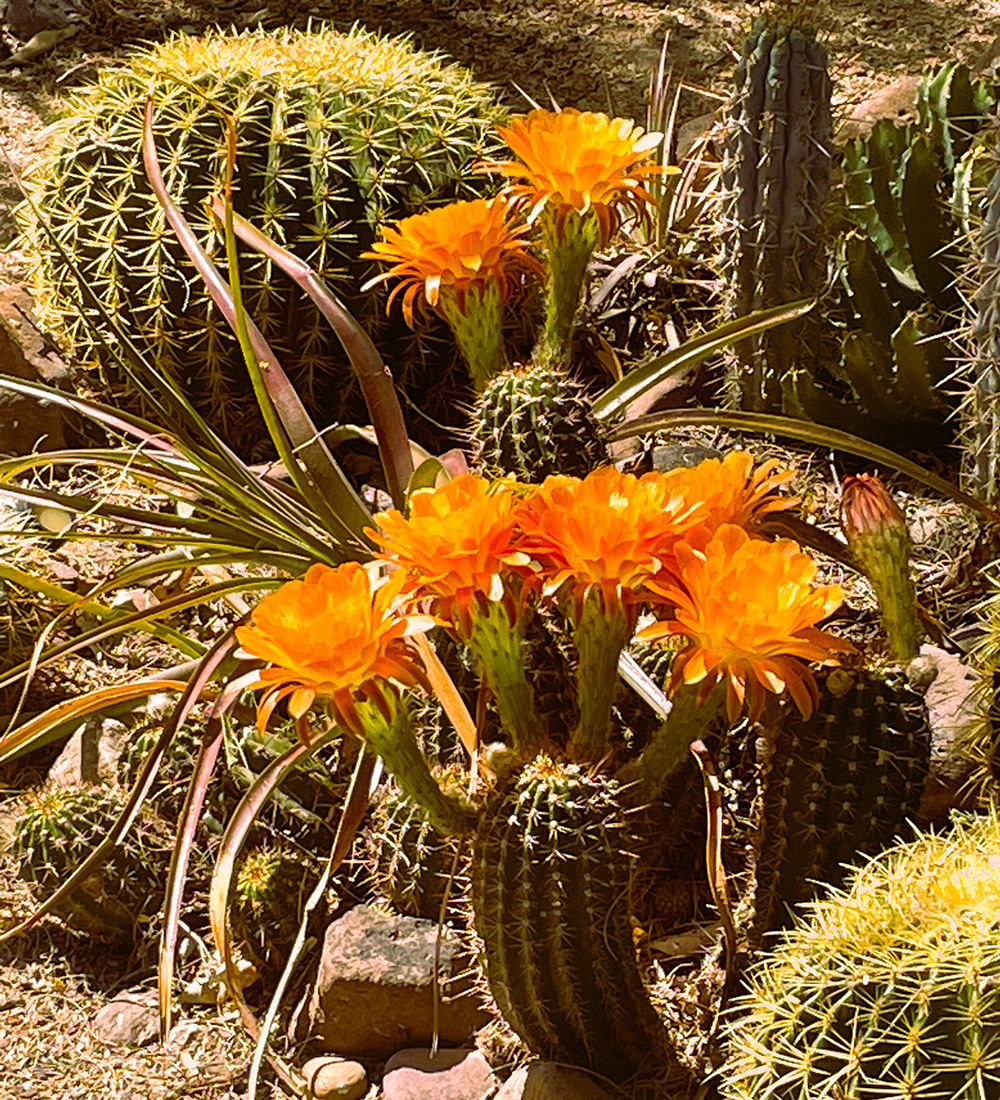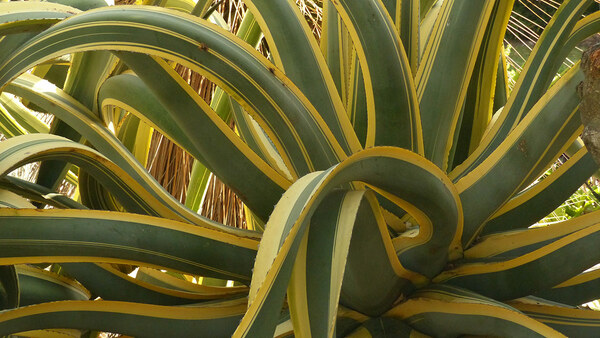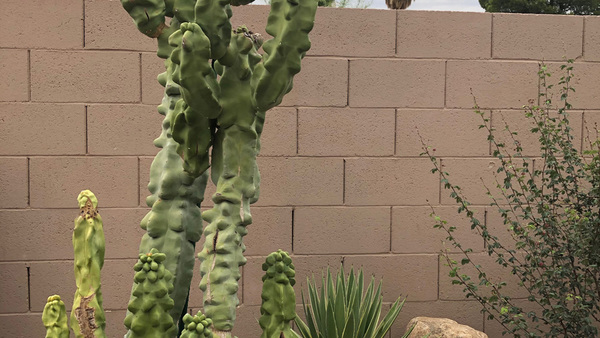
Echinopsis (Echinopsis spp. and cvs., Zones 8b–12), also called sea urchin cacti, have an allure that can sidetrack your better judgment. This genus is widespread in central South America and includes well over a hundred species. In cultivation since the 1800s, the straight species has its own appeal, with a wide range of characteristics, but it is the dazzling hybrids that can whisk away your reason. Beginning in the early 1900s, several hybridizers in California, Arizona, and Europe saw great potential in creating new and improved versions of these cacti. Today’s contemporaries still churn out ever-fancier selections to an eager online audience.

Why grow echinopsis? The allure lies in the blooms
Echinopsis are beloved for their stunning 4- to 8-inch flowers that can appear in waves from April to October. They are slow and steady growers but easy to care for. As plants mature, fuzzy blueberry-size buds appear around the crown and along the vertical ribs. These rest in a “waiting period” until prime conditions spur on a flush of growth. The buds can respond to heat and water within days, expanding to more than 6 inches long, and will burst open in unison on warm desert mornings. Most flowers last a single day, but under good conditions some may last nearly three days. This ephemeral show justifies an impromptu gathering of friends and neighbors to celebrate the event (morning coffee and pastries recommended). Luminous, sweetly scented, and ethereal, each bloom seems to be lit from within. Colors nearly span the rainbow, from vivid red and pink to sherbet-toned pastels and sunflower yellow.

How to grow and care for echinopsis
These plump cacti range from 3 to 6 inches in diameter, with some growing several feet tall. Most, however, remain squat and clustered with offsets, like hens and chicks (Sempervivum spp. and cvs., Zones 4–11). Different varieties have different amounts of needles and spines, but heavy gloves, tongs, or rolled-up newspaper makes handling them easy.
Planting and care tips
- Soil: Plant in well-drained soil.
- Climate: Winter temperatures should remain above 20°F.
- Sun: Echinopsis prefer dappled sun, especially under mesquite trees (Prosopis spp. and cvs., Zones 6–12) in locales such as Tucson and Phoenix.
- Fertilization: Occasional light fertilization during the growing season is sufficient.
- Growing in containers: Echinopsis can be equally content in containers even in the colder reaches of the Southwest if provided with winter sun and indoor protection. Use a gritty cactus mix that dries between infrequent watering.
- Bringing indoors for winter: In cold-winter areas, indoor conditions should be cool, sunny, and dry to encourage spring flowers. In spring, a gradual transition to an outdoor location will keep them robust and primed for summer blooms.
Favorite varieties
This genus is full of exciting species and hybrids with amazing flowers. Here are a few of my favorites.
‘Maria Piazza’ echinopsis (Echinopsis ‘Maria Piazza’, Zones 9–12) reblooms easily. Its rich, warm pink flowers with creamy white filaments can completely cover this compact plant.

‘Flying Saucer’ echinopsis (Echinopsis ‘Flying Saucer’, Zones 9b–10b) has among the largest of echinopsis blooms, each with a sweet scent on a sturdy, upright plant. A mass of these peach-colored flowers in bloom is breathtaking!

‘Almost Burnt Orange’ echinopsis (Echinopsis ‘Almost Burnt Orange’, Zones 9–11) has flowers in cheerful sunrise shades. These blooms create a glowing contrast with softer, lighter-colored flowers.
‘Big Bertha’ echinopsis (Echinopsis ‘Big Bertha’, Zones 8–11) leaves a big footprint over time. Columns that reach 6 inches in diameter begin by growing upright and later stretch in all directions. The clean white blooms have a strong scent that fills the morning garden.

Easter lily cactus (Echinopsis oxygona, Zones 8b–11) has very short, tidy spines and multiplies quickly. Its soft white-pink blooms are abundant and delightfully fragrant.
Offsets of echinopsis will root easily and can be shared with friends. If you can’t locate them locally, online resources are plentiful. Collecting the full spectrum of colors may be a slippery slope, but the satisfaction is worth it. My advice? Buckle up and enjoy the ride!
For more information on succulents for the Southwest, check out:
- Ocotillo Is a Native Shrub You Need to Grow
- Enchanting Echeverias for the Southwest
- Columnar Cacti for the Southwest
And for more Southwest regional reports, click here.
—Dan Johnson lives and gardens in Denver and in Tucson, Arizona. He is the associate director of horticulture for the Denver Botanic Gardens.
Fine Gardening Recommended Products

Johnny’s Selected Seeds Connecta® Cultivation Kit
Fine Gardening receives a commission for items purchased through links on this site, including Amazon Associates and other affiliate advertising programs.

Lee Valley Garden Obelisks
Fine Gardening receives a commission for items purchased through links on this site, including Amazon Associates and other affiliate advertising programs.

Gardener's Log Book from NYBG
Fine Gardening receives a commission for items purchased through links on this site, including Amazon Associates and other affiliate advertising programs.



















Comments
Log in or create an account to post a comment.
Sign up Log in